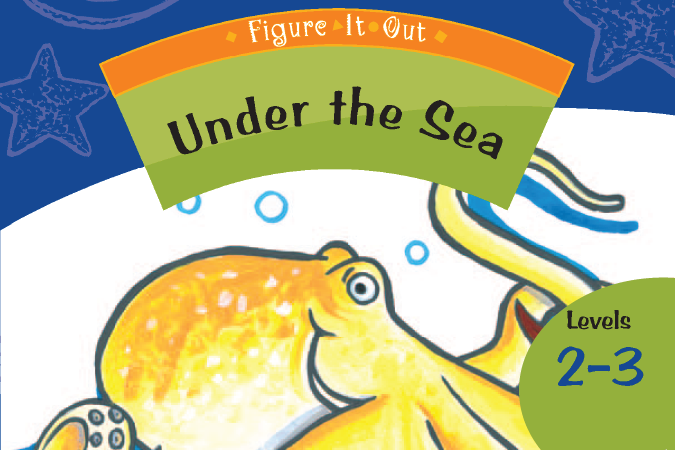Under the waves
This is a level 3 number activity from the Figure It Out theme series. A PDF of the student activity is included.

About this resource
Figure It Out is a series of 80 books published between 1999 and 2009 to support teaching and learning in New Zealand classrooms.
This resource provides the teachers’ notes and answers for one activity from the Figure It Out series. A printable PDF of the student activity can be downloaded from the materials that come with this resource.
Specific learning outcomes:
- Solve word problems using multiplication.
- Solve word problems involving finding fractions.
Under the waves
Achievement objectives
NA3-1: Use a range of additive and simple multiplicative strategies with whole numbers, fractions, decimals, and percentages.
Required materials
- Figure It Out, Level 2–3, Theme: Under the Sea, "Under the waves", page 8
See Materials that come with this resource to download:
- Under the waves activity (.pdf)
Activity
Each of the problems given on this page provides excellent opportunities for students to apply problem-solving strategies (see mathematics in The 2007 New Zealand Curriculum, pages 24 and 25).
Particular emphasis should be placed on the strategies of drawing diagrams and acting out. For example, a diagram of question 2 might look like:

Similarly, a pictorial diagram of question 3 might be:

Students might use 32 counters to represent the class members and share them out evenly among the quarters. It is important that students realise that one-half is two-quarters.

So eight of the class are sea horses, eight are sea snails, and 16 are dolphins.
Question 4 is a “bits missing” problem. Students will need to work out how many cabins are possible, given that the number of sea creatures in each cabin must be the same. Students can use a variety of strategies to find a solution:
- trial and improvement (sharing 27 counters between a number of piles)
- elimination (trying different numbers of cabins but eliminating numbers such as six, eight, and 10, which are not possible because 27 is an odd number)
- using multiplication facts that have an answer of 27 (1 x 27, 3 x 9, 9 x 3, 27 x 1). As there are more than four cabins, this leaves two possibilities. (27 cabins with one sea creature in each, or nine cabins with three sea creatures in each.)
1.
8
2.
90 cm
3.
16 dolphins
8 sea horses
8 sea snails
4.
Two possible answers: 9 cabins (3 in each) or 27 cabins (1 in each).
The quality of the images on this page may vary depending on the device you are using.


